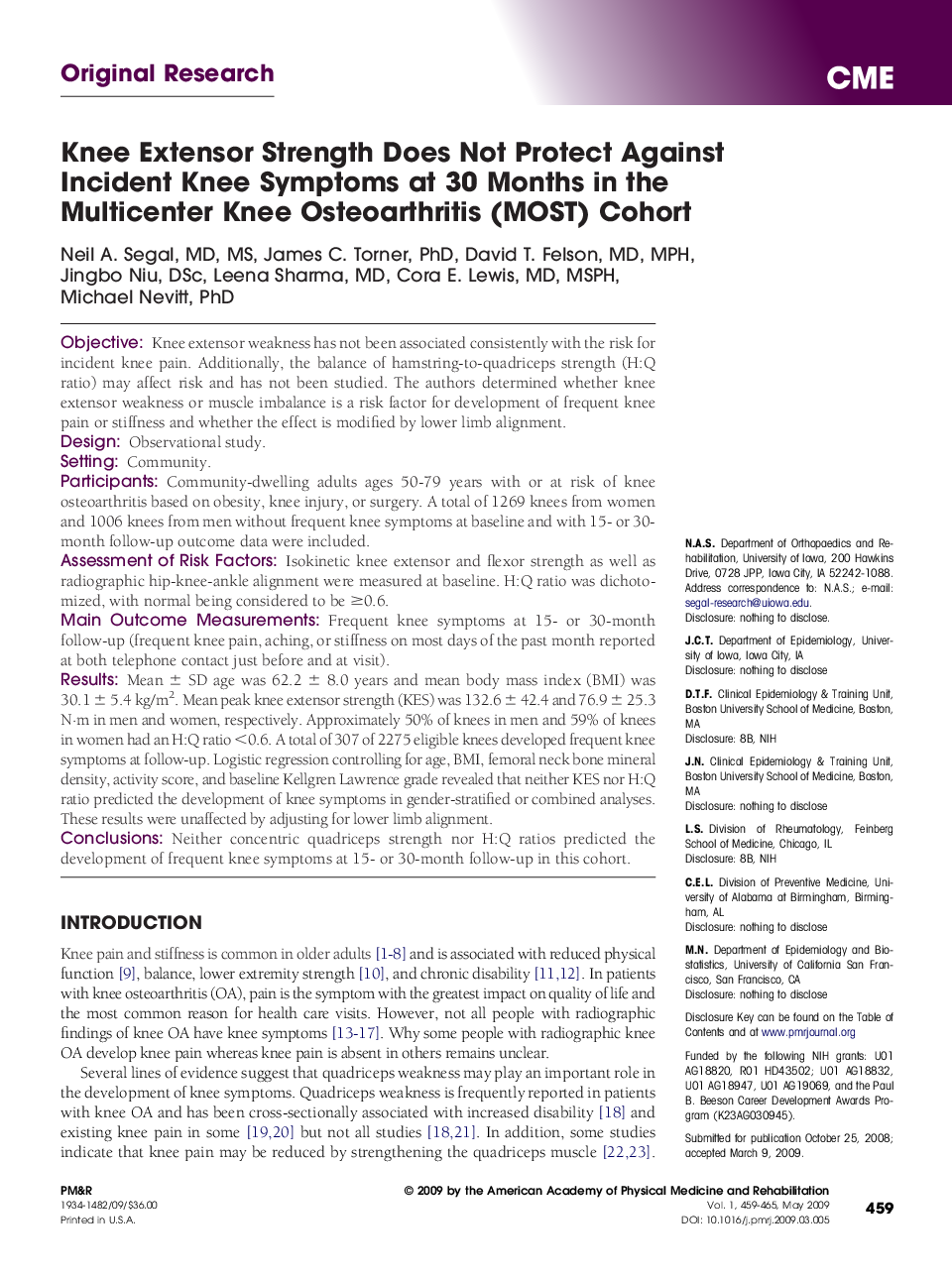| Article ID | Journal | Published Year | Pages | File Type |
|---|---|---|---|---|
| 2706979 | PM&R | 2009 | 7 Pages |
ObjectiveKnee extensor weakness has not been associated consistently with the risk for incident knee pain. Additionally, the balance of hamstring-to-quadriceps strength (H:Q ratio) may affect risk and has not been studied. The authors determined whether knee extensor weakness or muscle imbalance is a risk factor for development of frequent knee pain or stiffness and whether the effect is modified by lower limb alignment.DesignObservational study.SettingCommunity.ParticipantsCommunity-dwelling adults ages 50-79 years with or at risk of knee osteoarthritis based on obesity, knee injury, or surgery. A total of 1269 knees from women and 1006 knees from men without frequent knee symptoms at baseline and with 15- or 30- month follow-up outcome data were included.Assessment of Risk FactorsIsokinetic knee extensor and flexor strength as well as radiographic hip-knee-ankle alignment were measured at baseline. H:Q ratio was dichotomized, with normal being considered to be ≥0.6.Main Outcome MeasurementsFrequent knee symptoms at 15- or 30-month follow-up (frequent knee pain, aching, or stiffness on most days of the past month reported at both telephone contact just before and at visit).ResultsMean ± SD age was 62.2 ± 8.0 years and mean body mass index (BMI) was 30.1 ± 5.4 kg/m2. Mean peak knee extensor strength (KES) was 132.6 ± 42.4 and 76.9 ± 25.3 N·m in men and women, respectively. Approximately 50% of knees in men and 59% of knees in women had an H:Q ratio <0.6. A total of 307 of 2275 eligible knees developed frequent knee symptoms at follow-up. Logistic regression controlling for age, BMI, femoral neck bone mineral density, activity score, and baseline Kellgren Lawrence grade revealed that neither KES nor H:Q ratio predicted the development of knee symptoms in gender-stratified or combined analyses. These results were unaffected by adjusting for lower limb alignment.ConclusionsNeither concentric quadriceps strength nor H:Q ratios predicted the development of frequent knee symptoms at 15- or 30-month follow-up in this cohort.
